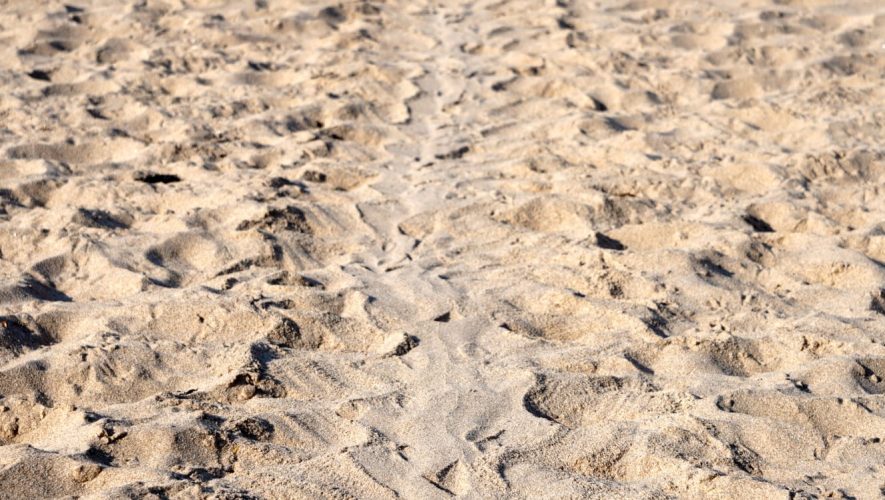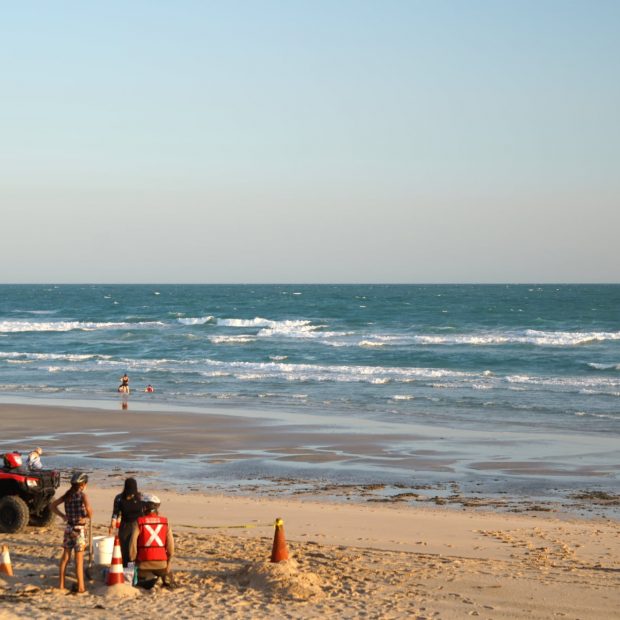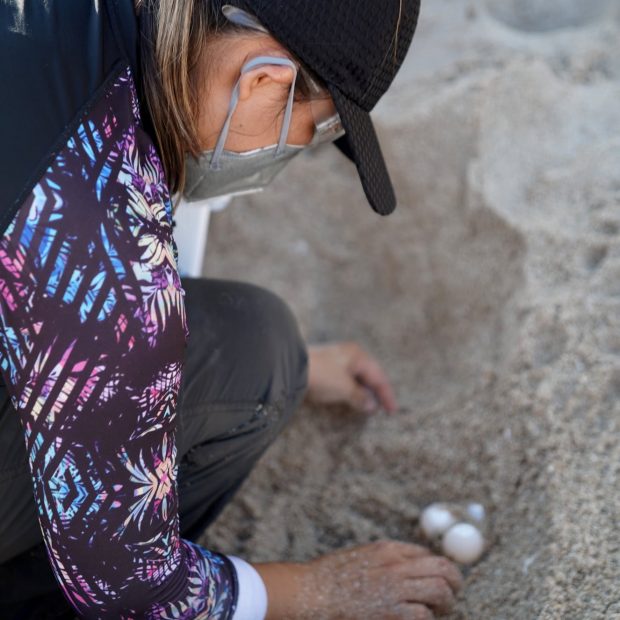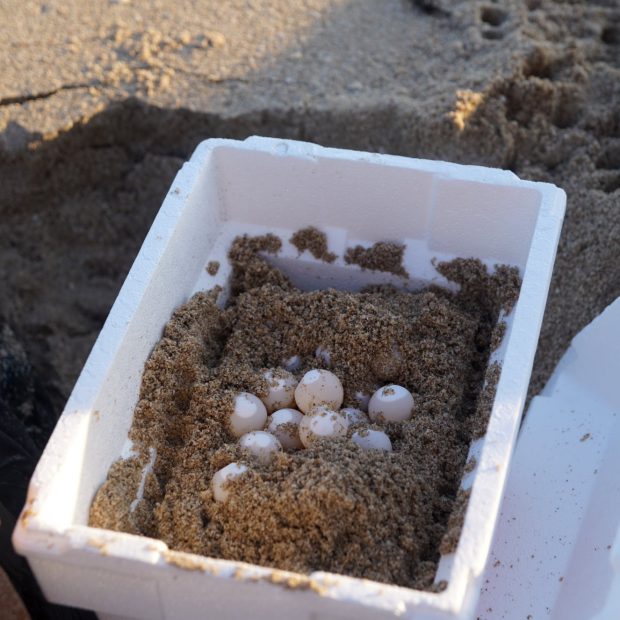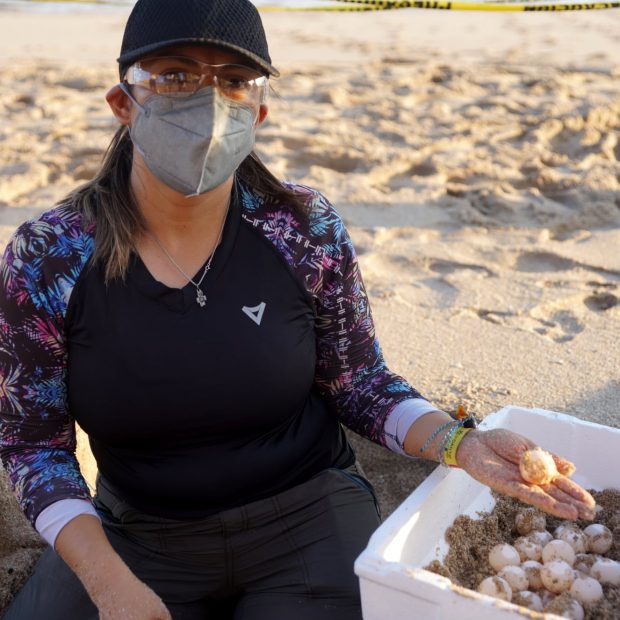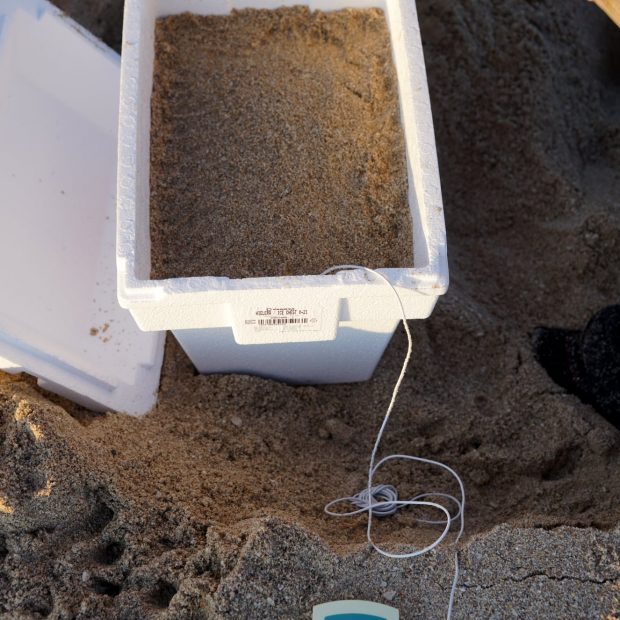All photos courtesy of and with permission of Tony Ballesteros. Aug. 18, 2021
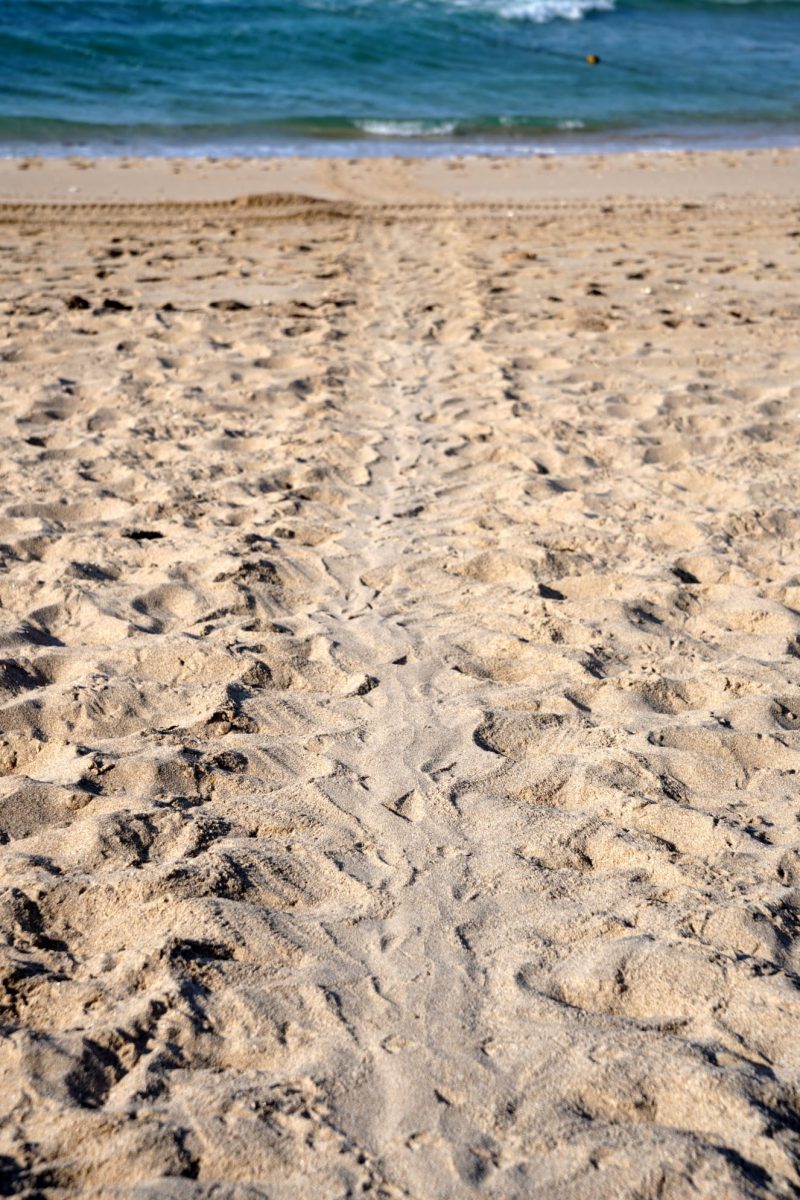
On Wednesday, Aug. 18th, one hundred twenty turtle eggs were carefully removed from an area on Sandy Beach by marine biologist Itzel Cardenas Montes of Mayan Palace. Given the area’s high temperature, the artificial incubation process is meant to safeguard the eggs until they hatch within approximately 45 to 60 days. Local photographer Tony Ballesteros captured the phenomenal recovery experience.
The successful Olive Ridley turtle nest adventure this past week comes after a belated start to turtle nests along Puerto Peñasco’s coasts, as well as the report of two other turtles spotted earlier in August that did not lay their eggs.
The local Convention and Visitors Bureau (OCV) advises if someone spots a turtle coming out of the water to nest on the beach, report this to ZOFEMAT, the municipal police, or safety personnel near where the sighting occurs (report to 911), who in turn can notify authorities in charge of cordoning off the area.
It is important to avoid crowding around to reduce any stress on the sea turtles while they spawn. Safety personnel at beachside resorts and hotels also take part in protection procedures, acting as supervisors and in notifying authorities.
Luis Cesar Garcia Gonzalez, head of the local office of the Federal Maritime and Land Zone (ZOFEMAT), reported while the nesting of sea turtles along Puerto Peñasco’s beaches has been slower when compared to previous years, they remain alert to ensure care and, where appropriate, removal and preservation of eggs to guarantee their successful development and hatching.
ZOFEMAT works in coordination with PROFEPA (Environmental Protection Agency), Grupo Vidanta (Mayan Palace), the Intercultural Center for the Study of Deserts and Oceans (CEDO), the local Clean Beach Committee, and resorts themselves to detect turtle sightings to ensure compliance with safety and conservation protocols.
Garcia González explained when beaches were closed for several months last year, due to the Covid-19 pandemic, a total of 4 nests were reported, and 345 eggs put into artificial incubation.
In the last five years, nearly 1,800 turtle eggs have been rescued from along Puerto Peñasco’s beaches, resulting in the release of over 800 baby turtles into the sea.
Conserving Olive Ridley nests and eggs along area beaches is protected under endangered species NOM 059. The Mexican Official Norm 059 (NOM-059) is a regulatory instrument that identifies at risk wildlife species or populations in Mexico via the Wildlife Species Risk of Extinction Evaluation Method (MER).
